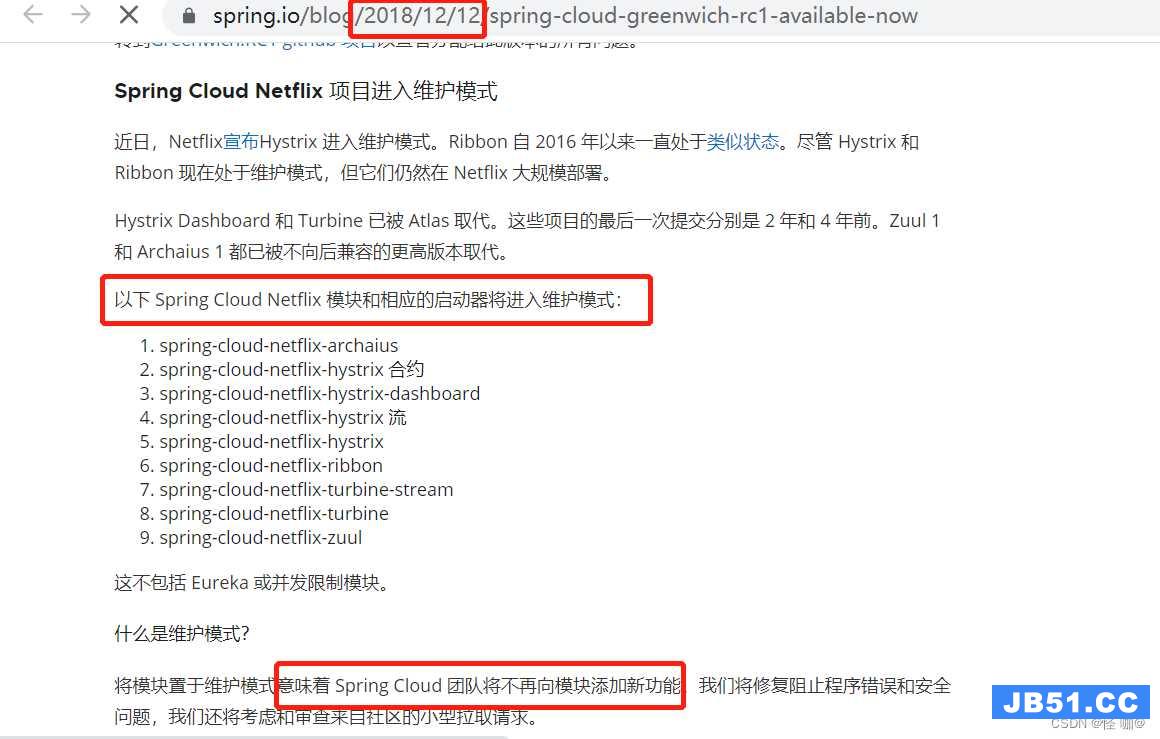引言
如果说JdbcTemplate类是Spring Jdbc的核心类,那么execute方法算得上Spring Jdbc的核心方法了,毕竟JdbcTemplate的很多public方法内部实际上是调用execute方法实现的。
public T execute(ConnectionCallback action) throws DataAccessException
通过使用操作一个JDBC的Connection的回调操作,可以执行JDBC的数据操作,同时支持Spring的事务管理和可以将throw的SQLException转为Spring统一定义的DataAccessException。该回调函数可以返回一个对象,也可以返回结果集。
内部实现
public <T> T execute(ConnectionCallback<T> action) throws DataAccessException {
Assert.notNull(action,"Callback object must not be null");
Connection con = DataSourceUtils.getConnection(obtainDataSource());
try {
// Create close-suppressing Connection proxy,also preparing returned Statements.
Connection conToUse = createConnectionProxy(con);
return action.doInConnection(conToUse);
}
catch (SQLException ex) {
// Release Connection early,to avoid potential connection pool deadlock
// in the case when the exception translator hasn't been initialized yet.
DataSourceUtils.releaseConnection(con,getDataSource());
con = null;
throw getExceptionTranslator().translate("ConnectionCallback",getSql(action),ex);
}
finally {
DataSourceUtils.releaseConnection(con,getDataSource());
}
}
通过查看源代码,我们可以看出ConnectionCallback需要传入一个特殊的Jdbc Connection。
首先DataSourceUtils从当前的数据源获取一个普通Connection(该Connection支持Spring的事务),然后使用createConnectionProxy对这个Connection进行了封装了,使用了JDK动态代理技术,对Connection的一些方法进行了重新处理,比如isClose方法只会返回false,执行close方法时其内部根本就没有关闭。
当抛出SQLException的时候,为了防止初始化异常转换器的时候出现的存放Connecton的池出现死锁,会优先尝试释放该Connection,如果该Connection支持事务则释放,不然则由Spring自行判断是否关闭。实际上通过查看DataSourceUtils的具体实现可以发现,该Connection是通过TransactionSynchronizationManager包装过,因此是支持Spring的事务管理的。
T execute(StatementCallback action) throws DataAccessException
通过使用操作一个JDBC的Statement的回调操作,可以执行JDBC的数据操作,同时支持Spring的事务管理和可以将throw的SQLException转为Spring统一定义的DataAccessException。该回调函数可以返回一个对象,也可以返回结果集。
内部实现
public <T> T execute(StatementCallback<T> action) throws DataAccessException {
Assert.notNull(action,"Callback object must not be null");
Connection con = DataSourceUtils.getConnection(obtainDataSource());
Statement stmt = null;
try {
stmt = con.createStatement();
applyStatementSettings(stmt);
T result = action.doInStatement(stmt);
handleWarnings(stmt);
return result;
}
catch (SQLException ex) {
// Release Connection early,to avoid potential connection pool deadlock
// in the case when the exception translator hasn't been initialized yet.
JdbcUtils.closeStatement(stmt);
stmt = null;
DataSourceUtils.releaseConnection(con,getDataSource());
con = null;
throw getExceptionTranslator().translate("StatementCallback",ex);
}
finally {
JdbcUtils.closeStatement(stmt);
DataSourceUtils.releaseConnection(con,getDataSource());
}
}
通过查看源代码,Connection的创建和释放就交给了DataSourceUtils,关于这个类如何创建、释放和关闭Connection,则可以看我的另一篇博客《DataUtils对Connection的获取、释放和关闭的操作学习》。
在获得Connection之后再创建Statement,并且通过applyStatementSettings方法设置Statement的fetchSize、maxRows和timeout属性。在完成了Statement的创建工作之后便是调用StatementCallback回调接口,返回执行结果。不过在返回执行结果之前需要判断是否抛出SQL Warning。如果JdbcTemplate的ignoreWarnings属性为true,即忽略警告,则仅仅在日志做debug处理,否则将会抛出SQLWarningException。
public void execute(final String sql) throws DataAccessException
内部实现
public void execute(final String sql) throws DataAccessException {
if (logger.isDebugEnabled()) {
logger.debug("Executing SQL statement [" + sql + "]");
}
class ExecuteStatementCallback implements StatementCallback<Object>,SqlProvider {
@Override
public Object doInStatement(Statement stmt) throws SQLException {
stmt.execute(sql);
return null;
}
@Override
public String getSql() {
return sql;
}
}
execute(new ExecuteStatementCallback());
}
通过查看源代码,我们可以看出该方法内部实际上通过方法内部类调用了execute(StatementCallback
此外,该方法也对sql语句做了日志的debug处理,这样我们可以在调试的时候查看sql语句,前提是我们选择实现的日志框架要支持debug。
public T execute(PreparedStatementCreator psc,PreparedStatementCallback action)
内部实现
public <T> T execute(PreparedStatementCreator psc,PreparedStatementCallback<T> action)
throws DataAccessException {
Assert.notNull(psc,"PreparedStatementCreator must not be null");
Assert.notNull(action,"Callback object must not be null");
if (logger.isDebugEnabled()) {
String sql = getSql(psc);
logger.debug("Executing prepared SQL statement" + (sql != null ? " [" + sql + "]" : ""));
}
Connection con = DataSourceUtils.getConnection(obtainDataSource());
PreparedStatement ps = null;
try {
ps = psc.createPreparedStatement(con);
applyStatementSettings(ps);
T result = action.doInPreparedStatement(ps);
handleWarnings(ps);
return result;
}
catch (SQLException ex) {
// Release Connection early,to avoid potential connection pool deadlock
// in the case when the exception translator hasn't been initialized yet.
if (psc instanceof ParameterDisposer) {
((ParameterDisposer) psc).cleanupParameters();
}
String sql = getSql(psc);
JdbcUtils.closeStatement(ps);
ps = null;
DataSourceUtils.releaseConnection(con,getDataSource());
con = null;
throw getExceptionTranslator().translate("PreparedStatementCallback",sql,ex);
}
finally {
if (psc instanceof ParameterDisposer) {
((ParameterDisposer) psc).cleanupParameters();
}
JdbcUtils.closeStatement(ps);
DataSourceUtils.releaseConnection(con,getDataSource());
}
}
这个execute方法比较少用,主要是通过PreparedStatementCreator来获取PreparedStatement。PreparedStatementCreator接口是JdbcTemplate类使用的两个核心回调接口之一(另外一个是CallableStatementCreator)。此接口通过给定的一个Connection来创建一个PreparedStatement,去负责提供sql语句和任何必要的参数。同时为了更好的方便我们进行debug,建议PreparedStatementCreator实现类也能够继承实现SqlProvider接口。
public T execute(CallableStatementCreator csc,CallableStatementCallback action)
内部实现
public <T> T execute(CallableStatementCreator csc,CallableStatementCallback<T> action)
throws DataAccessException {
Assert.notNull(csc,"CallableStatementCreator must not be null");
Assert.notNull(action,"Callback object must not be null");
if (logger.isDebugEnabled()) {
String sql = getSql(csc);
logger.debug("Calling stored procedure" + (sql != null ? " [" + sql + "]" : ""));
}
Connection con = DataSourceUtils.getConnection(obtainDataSource());
CallableStatement cs = null;
try {
cs = csc.createCallableStatement(con);
applyStatementSettings(cs);
T result = action.doInCallableStatement(cs);
handleWarnings(cs);
return result;
}
catch (SQLException ex) {
// Release Connection early,to avoid potential connection pool deadlock
// in the case when the exception translator hasn't been initialized yet.
if (csc instanceof ParameterDisposer) {
((ParameterDisposer) csc).cleanupParameters();
}
String sql = getSql(csc);
JdbcUtils.closeStatement(cs);
cs = null;
DataSourceUtils.releaseConnection(con,getDataSource());
con = null;
throw getExceptionTranslator().translate("CallableStatementCallback",ex);
}
finally {
if (csc instanceof ParameterDisposer) {
((ParameterDisposer) csc).cleanupParameters();
}
JdbcUtils.closeStatement(cs);
DataSourceUtils.releaseConnection(con,getDataSource());
}
}
这个execute方法也比较少用,主要是通过CallableStatementCreator来获取CallableStatement。与PreparedStatementCreator接口类似,CallableStatementCreator是JdbcTemplate接口另外一个的核心回调接口,同样建议也去实现SqlProvider接口。
public T execute(String sql,PreparedStatementCallback action) throws DataAccessException
该方法自定义实现了PreparedStatementCreator接口,调用了execute(PreparedStatementCreator psc,PreparedStatementCallback
内部实现
public <T> T execute(String sql,PreparedStatementCallback<T> action) throws DataAccessException {
return execute(new SimplePreparedStatementCreator(sql),action);
}
SimplePreparedStatementCreator的定义
private static class SimplePreparedStatementCreator implements PreparedStatementCreator,SqlProvider {
private final String sql;
public SimplePreparedStatementCreator(String sql) {
Assert.notNull(sql,"SQL must not be null");
this.sql = sql;
}
@Override
public PreparedStatement createPreparedStatement(Connection con) throws SQLException {
return con.prepareStatement(this.sql);
}
@Override
public String getSql() {
return this.sql;
}
}
public T execute(String callString,CallableStatementCallback action) throws DataAccessException
该方法自定义实现了CallableStatementCreator接口,调用了execute(String callString,CallableStatementCallback
内部实现
public <T> T execute(String callString,CallableStatementCallback<T> action) throws DataAccessException {
return execute(new SimpleCallableStatementCreator(callString),action);
}
SimpleCallableStatementCreator的定义
private static class SimpleCallableStatementCreator implements CallableStatementCreator,SqlProvider {
private final String callString;
public SimpleCallableStatementCreator(String callString) {
Assert.notNull(callString,"Call string must not be null");
this.callString = callString;
}
@Override
public CallableStatement createCallableStatement(Connection con) throws SQLException {
return con.prepareCall(this.callString);
}
@Override
public String getSql() {
return this.callString;
}
}

 这篇文章主要介绍了SpringCloudAlibaba和SpringCloud有什么区...
这篇文章主要介绍了SpringCloudAlibaba和SpringCloud有什么区... 本篇文章和大家了解一下SpringCloud整合XXL-Job的几个步骤。...
本篇文章和大家了解一下SpringCloud整合XXL-Job的几个步骤。... 本篇文章和大家了解一下Spring延迟初始化会遇到什么问题。有...
本篇文章和大家了解一下Spring延迟初始化会遇到什么问题。有... 这篇文章主要介绍了怎么使用Spring提供的不同缓存注解实现缓...
这篇文章主要介绍了怎么使用Spring提供的不同缓存注解实现缓...